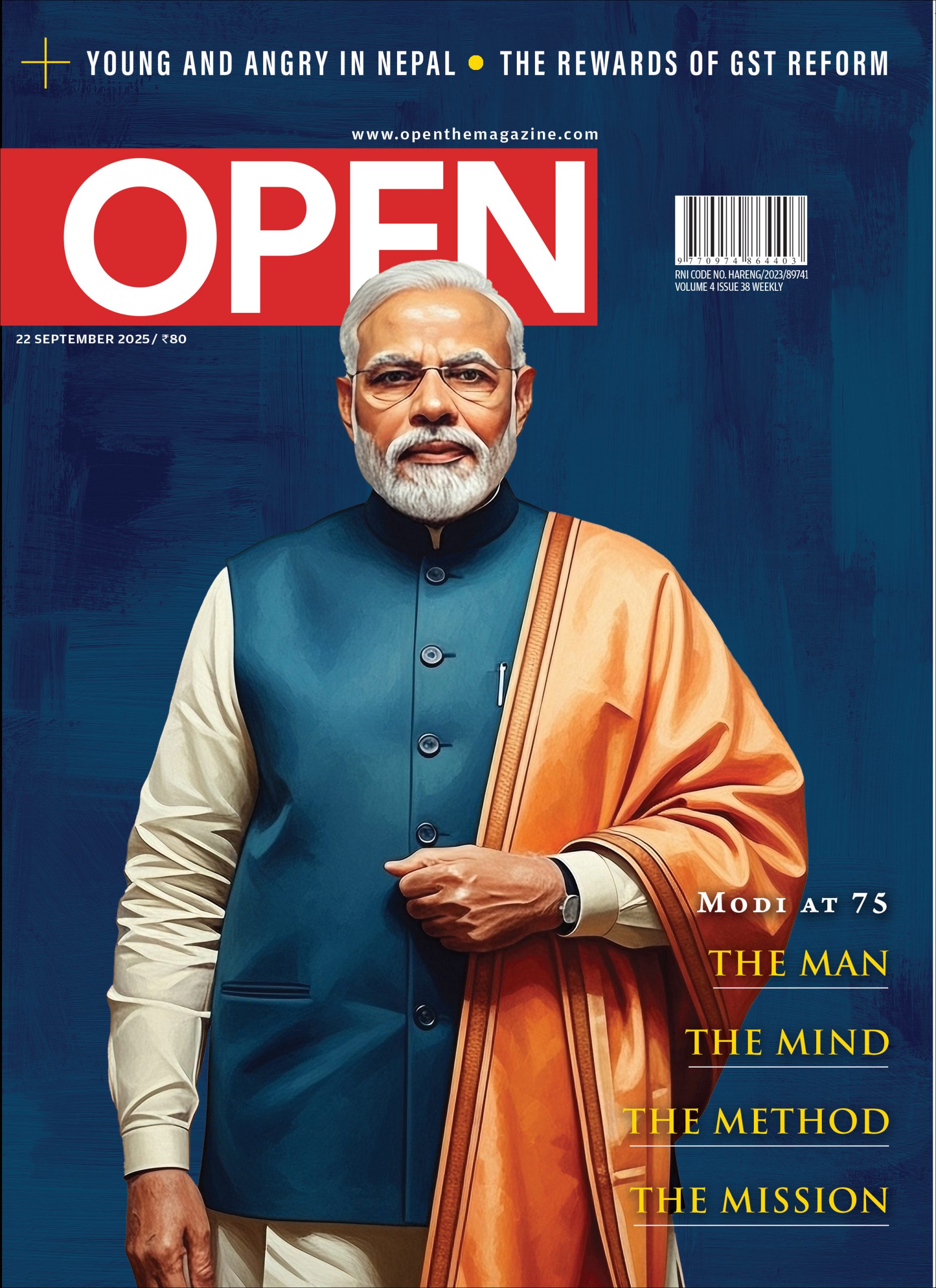Is India Ready for Driverless Cars?
Hands off
 Lhendup G Bhutia
Lhendup G Bhutia
 Lhendup G Bhutia
Lhendup G Bhutia
 |
15 Feb, 2018
|
15 Feb, 2018
/wp-content/uploads/2018/02/Driverless1.jpg)
LAST NOVEMBER, IN the area outside his house that he has come to refer as ‘the campus’, Sanjeev Sharma took his vehicle out for a spin. He was recording the journey on camera. The campus is a slim but crowded residential lane in Bhopal. There are vehicles parked on both sides of the road and people moving about to and fro, on foot and bicycles. It is, as Sharma calls it, an unstructured environment. A typical Indian road where any minute someone might dash out without warning or a vehicle might emerge without a honk.
In the video footage, with a growling rattling sound, the vehicle comes to life. Sharma is holding the camera while settled in the driver’s seat. The jeep inches forward, the steering wheel jerks and moves. On the lane, passing people appear to peep inside. The camera then pans downward for the steering wheel. And you see Sharma is not holding it. Nobody is.
“Nice, right?” he asks the camera.
A few seconds later, out of the blue, a motorbike emerges. For the first time, this ghost-driven vehicle is faced with another moving motor. The bike is headed in the opposite direction and travelling at a fairly fast clip. When it nears, Sharma’s vehicle in response—ever so haltingly and completely on its own—steers itself slightly to the left and lets it pass.
“Did you see it?” Sharma asks me later, referring to the clip of the incident he put up on YouTube. “The bike, it just showed up, completely unplanned, and the car, it moved.”
For the last nine years, Sharma—a former student of IIT Roorkee who specialises in motion planning—has been working on technology for autonomous or self-driving vehicles. His research on autonomous navigation has taken him to many places, from internships in the US to Israel, before he finally returned to India and set up Swaayatt Robots (‘swaayat’ in Sanskrit means ‘autonomous’). Sharma has been pursuing his project mostly on his own in Bhopal, tinkering with a Bolero jeep he purchased for this purpose in 2015, occasionally enlisting the help of engineering students doing internships under him.
Across the globe, there are several automobile and tech giants working in the field of self-driving vehicles. Various companies from Tesla and Alphabet to Uber and Ford have invested heavily in what Intel projects will spur $7 trillion of spending by 2050. But Sharma, along with a handful of other tech and robotic startups in India, has perhaps taken up the most ambitious of these self-driving challenges: building the technology for an autonomous car to navigate the unpredictable and unruly Indian road.
“I don’t think you will be able to bring the technology existing elsewhere and just slap it into a car for an Indian road,” Sharma says. “For self-driving to work in India, you will have to build a unique technology for it.”
A UTOPIAN FUTURE of driverless cars is apparently close at hand, where roads will be safer and road space more efficiently managed. In this future, car ownership will be a thing of the past. Instead of having a car spend most of its lifetime gathering dust and losing value in a garage, you could pick the convenient and affordable option of using a self-driving app-based taxi or ride- sharing service, which would get even cheaper once driver costs are done away with. These autonomous cars won’t get drunk or doze off, jump signals, get distracted with phones or have fits of road rage. They will have good traffic values embedded in their systems, inbuilt computer codes that don’t just follow rules, but are smart enough to read signals and signage, recognise patterns and make quick decisions about a large volume of information on routes, traffic and pedestrians.
But will it work in the chaos and lawlessness of Indian roads? Two years ago, when Uber’s then chief Travis Kalanick came visiting, he said India would be the last place on earth to get self- driving cars. Pointing dramatically at the road outside, he declared to a reporter, “Those streets, those streets, are difficult.”
“I don’t think you can use technology existing elsewhere. For self driving to work in India, you will have to build a unique technology” – Sanjeev Sharma, founder, Swaayatt Robots
According to Ritukar Vijay, head of autonomous technologies and business strategy at Hi-Tech Robotic, the adoption of autonomous vehicles in India will be slow, but will occur. “We are going to see them first in places like college campuses or for things like mining. They will first be deployed in these constrained areas with fixed routes,” he says. “Also, as these new technologies develop, there is going to be a gradual shift on Indian roads from completely driver-dependent vehicles to more and more advanced driver assistance systems [like automatic brakes, assisted parking, etcetera], to eventually fully-autonomous cars.”
Hi-Tech Robotic is a Gurugram-based tech startup that works in the driverless technology space. Back in 2016, it first displayed its Novus Drive, a 14-seater driverless shuttle which can autonomously navigate on its own. It is set up with multiple cameras, high-fidelity sensors and a computer algorithm for navigation. The company is also working with six original equipment manufacturers, including several Indian automobile companies, to develop technologies for their autonomous vehicles. Vijay declines to reveal the names of these firms, but it is believed to include Mahindra & Mahindra (M&M), Tata Motors and Maruti Suzuki. “By February end, March beginning, that’s when [these companies] are supposed to reveal these new cars,” he says.
A few auto companies in India appear to be working discreetly on self-driving technologies. According to reports, Tata Elxsi, the design firm of the Tata Group, has under development its own autonomous car platform and has even begun testing some repurposed cars. M&M recently displayed its maiden driverless tractors; these are GPS-enabled and can carry out operations without any steering done by farmers. Expected to be launched later this month, the technology is being phased in: first up is a driver-assisted tractor, which will be followed by quasi-driverless and fully-driverless models by the end of 2018-19.
“The world over, the shift to autonomous driving is happening,” Vijay says. “It is happening slowly, but it is something that is definitely happening.”
The biggest stumbling block so far has been getting the perception technology right. While a camera might appear like an obvious choice, it has its set of limitations. “A camera functions like a human eye. And HD cameras are easily available these days. But cameras cannot do depth perception,” explains Ashish Lachhwani, head of strategic partnerships and business development at the Bengaluru-based Steradian Semiconductors. “It cannot calculate how other things around it are moving. It cannot calculate velocity or likely speed of impact.” Lidar (light detection and ranging)— which uses laser light pulses flashed from a rotating mirror to scan the surrounding area—is considered the most accurate technology to perceive surroundings. It can distinguish objects, for instance vehicles apart from pedestrians, and measure their distance and speed, and it does so while creating a precise 3D map of everything around. However, in poor visibility and weather conditions like fog, its efficacy dwindles. “Just like we can’t see all that well in a fog. It is the same with Lidar,” says Lachhwani. “But that’s not good enough. Can you sell cars with airbags that work in summer but not winter?” Lidar is also incredibly expensive. According to Vijay, a fully-autonomous vehicle that uses Lidar will be at least 10 times more expensive than a regular vehicle. But as Vijay points out, the cost of Lidar is rapidly dropping. “It has already dropped from $75,000 to something between $7,000 and $10,000. [It] is supposed to come down even further,” he says.
There are others who are hedging their bets on radar technology to solve this problem. Radar, short for radio detection and ranging, is much cheaper in comparison, and, since radio waves are used, they can even function in poor weather conditions.
Many of the top motor companies, from GM and Ford to Google’s Waymo, are using Lidar. Tesla, however, relies on cameras and radars to gather information, and then uses a powerful onboard computer to crunch that data.
“The randomness of Indian roads can best be solved by an algorithm. We know it will take time. But at some point self-drive cars will be a reality even here” – Ritukar Vijay, head of business strategy, Hi-Tech Robotic
Radar cannot discern actual objects the way Lidar can. “This is because radar operates on a much lower frequency, and hence the low resolution,” says Lachhwani. Lachhwani’s company is betting on radar to become the way for autonomous cars to perceive their surroundings. To solve the issue of radar’s low resolution, Steradian Semiconductors has developed a compact integrated circuit (IC) that maximises the pixel per square millimetre, to give what it calls a ‘high-resolution 4D radar’. The company’s system consists of an IC and antennas which will work along with an inbuilt camera and GPS to detect ambient objects.
“There is a big problem with sensors in this industry. There is nothing that is cheap and accurate at the same time,” Lachhwani says. “Lidar is good but expensive and doesn’t work well in harsh weather conditions. Radar is significantly cheaper and works well in bad weather, but it is like an inferior camera with very few pixels. But with our system, we have increased the resolution.”
According to the US-based Society of Automotive Engineers, there are various levels of autonomous vehicles. Level 0 is not automated in any way and relies completely on the driver. Level 1 vehicles are those with some form of driver-assistance like reversing sensors. In Level 2, the controls are shared. The steering and speed are controlled by a driver-assistance system, but a human driver controls the rest of the vehicle. In Level 3, the responsibility for all the critical safety functions are borne by the car, but someone must be in the driver’s seat and ready to intervene if things go wrong.
In a 2016 accident that killed a Tesla driver in Florida, US, the car’s autopilot system was classified as Level 2 technology, although some argue that it was really a Level 3 car. It is believed that the driver either failed to respond in time to avert the accident, or he mistakenly assumed that the system was more accurate than mere driver-assistance.
In Level 4 systems, no driver attention is required. The car drives by itself but only in limited, mapped or geo-fenced areas. The Level 5 system will have fully automated vehicles that won’t need pedals, steering wheels, or controls for a human to take charge. “Nobody really knows what the timeline of these vehicles will look like. Level 5 is a few years away for sure,” Lachhwani says. “But there are going to be several intermittent stages. And lots of people are doing different things.”
Hi-Tech Robotic has developed driver-assistance platforms and has begun to conduct trials of trucks on Indian roads. In these systems, cameras within a driver’s cabin observe his actions and reactions, and if the system determines that he is distracted, it alerts him with a beep. If the driver doesn’t apply the brakes, the system does it for him. Similarly, the system also assists the driver by providing warnings of likely collisions or lane departures.
Sharma is trying to develop a system for an autonomous car that is somewhere between Level 3 and 4. As he explains, autonomous technologies mostly depend on three key areas. One is perception, where sensors help the car perceive its surroundings. The second is localisation, where the vehicle knows exactly where it is. The third, navigation, where the car has to make decisions on its movement, is what Sharma is most interested in. This is also what he calls the most challenging aspect when it comes to making self- driving work on Indian roads. “Decisions like the ones a human driver has to make. Whether it should overtake the car ahead? Should it wait for a pedestrian to cross? And in India, other difficult questions, like what to do at a traffic point without signals? What to do if an animal, a cow or maybe an elephant, is on the road?”
Towards the end of the month or early March, Sharma is planning to let his Bolero jeep drive itself on a highway for the first time. He has been able to convince a Lidar firm to offer its sensors at a discount. “I want to show that self-driving can work in India too. I’ll be there in the driver’s seat, just in case,” he says.
As and when the technology behind autonomous cars gets closer, the big questions are likely to be as societal and financial as well as technological. Accidents might get less common with autonomous vehicles, but if and when the inevitable crash does happen, who will be held responsible? Would it be the car owner or the firm which made the vehicle? Would the insurance burden be taken on by car makers? And what of the ethical dilemmas around life and death? The soi-disant ‘trolley problem’ for instance, a thought experiment often used in moral psychology research, where each option offered to the test subject results in something bad. In the original formulation, the problem has someone standing at a railway switch, watching a train hurtle towards a group of five people tied to the track. On another track, a single person is tied. The observer can either choose to let the trolley kill the five people or reroute it to the other track where it will kill one.
An autonomous vehicle will someday find itself in such a situation. Will the vehicle decide to strike a group of pedestrians while keeping its driver and passengers safe, or will it instead save the pedestrians but crash full-speed into a concrete barrier?
Two years ago, when Mercedes-Benz’s executive Christoph von Hugo was asked this question, according to media reports, he replied that Mercedes-Benz’s future autonomous cars would chose the safety of the car’s occupants. “If you know you can save at least one person, at least save that one… Save the one in the car. If all you know for sure is that one death can be prevented, then that’s your first priority.” The company later issued a statement saying that the executive was misquoted.
For Vijay, autonomous cars, when they eventually come, will do much more good than harm. He points at the statistics of road accidents in India to argue in favour of self-driving cars. “The randomness of Indian roads can best be solved by an algorithm,” he says. “We believe that and we know it will take some time. But at some point, it will be a reality even here.”

/wp-content/uploads/2025/09/Cover-Modi-scaled.jpg)













More Columns
I Missed A Flight Thanks To Robert Redford, Plus He Took My Magazine! Alan Moore
Robert Redford (1936-2025): Hollywood's Golden Boy Kaveree Bamzai
Surya and Co. keep Pakistan at arm’s length in Dubai Rajeev Deshpande